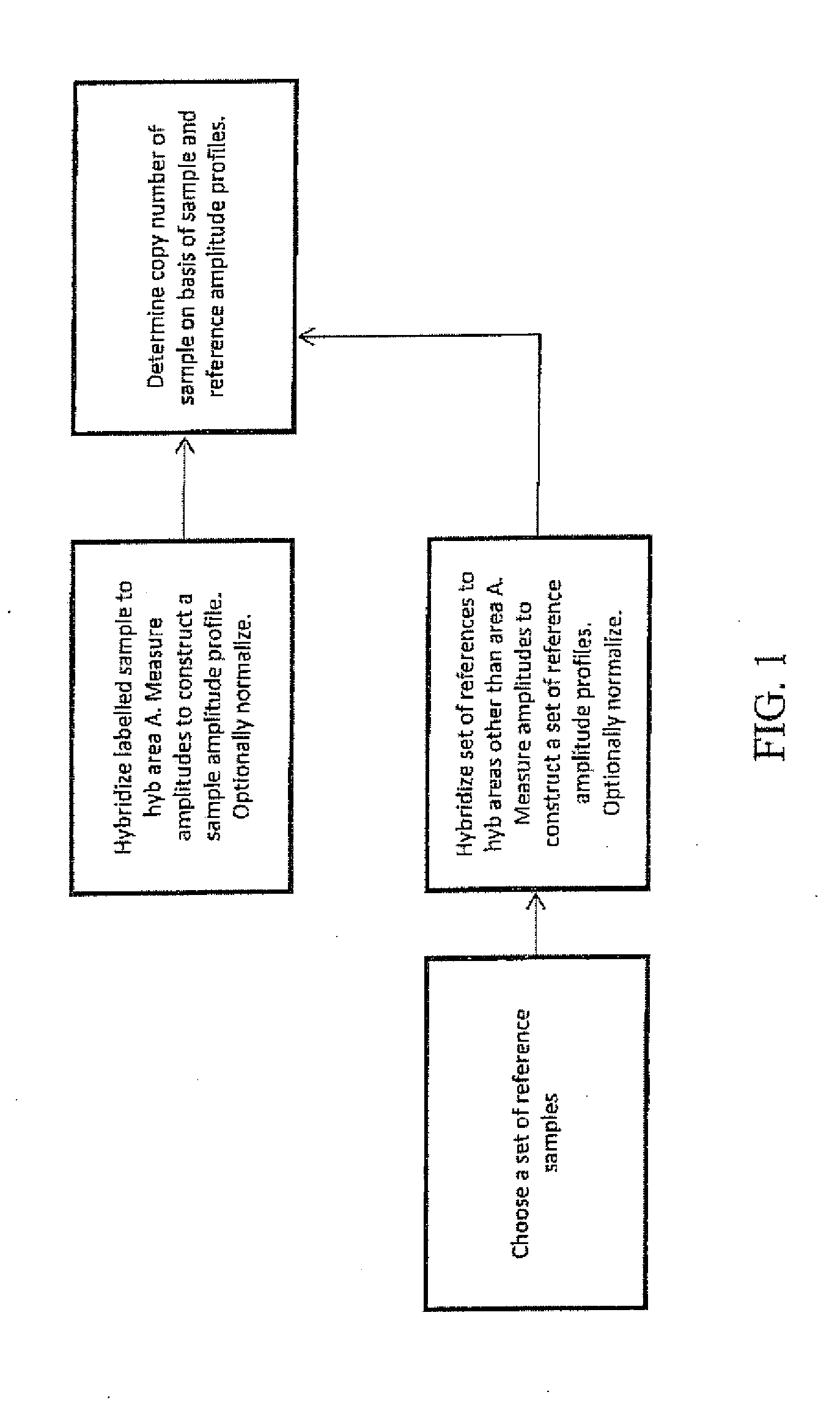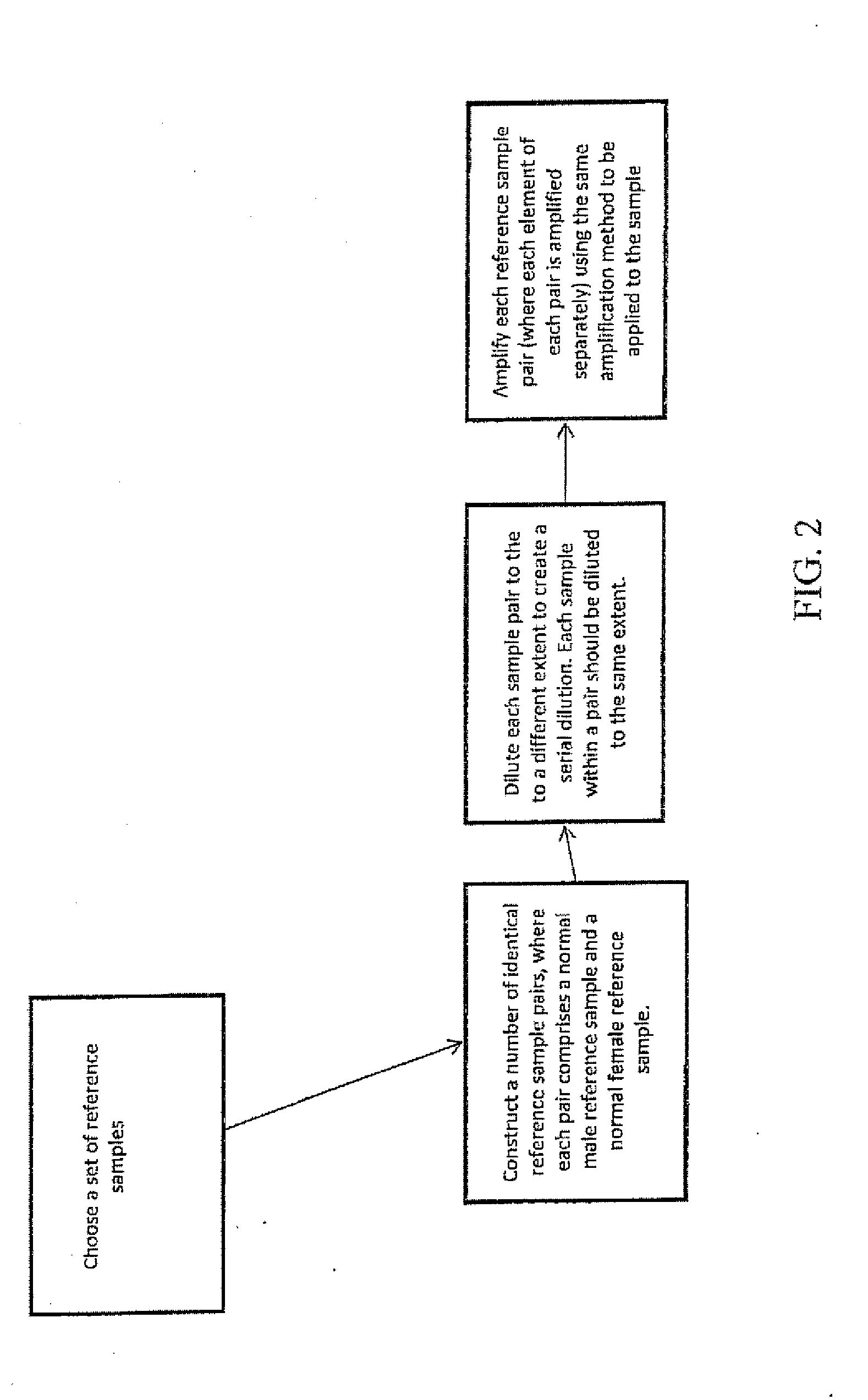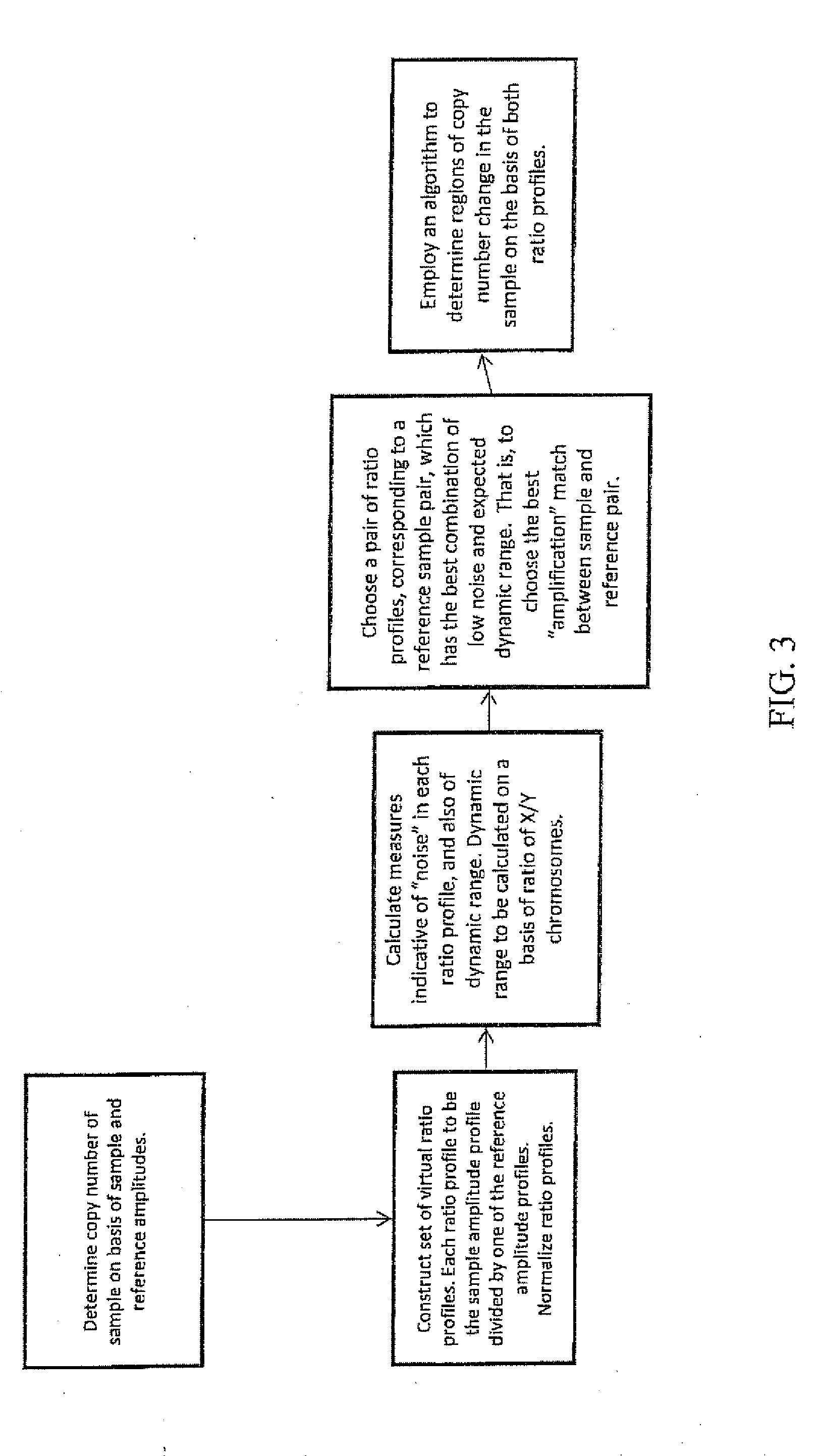Comparative genomic hybridization array method for preimplantation genetic screening
a genomic hybridization and array technology, applied in the field of comparative genomic hybridization array method for preimplantation genetic screening, can solve the problems of incompatibility with the time frame required, method is technically challenging, and requires high levels of expertise to carry out and analyze, so as to reduce the risk of assay failure, increase assay quality, accuracy, and yield
- Summary
- Abstract
- Description
- Claims
- Application Information
AI Technical Summary
Benefits of technology
Problems solved by technology
Method used
Image
Examples
examples
A sample comprising a normal female missing 1 copy of chromosomes 13 and 19 was provided. FIG. 5 shows a pair of plots wherein the top plot of each shows a sample compared to a male reference and the bottom plot of each shows a sample compared to a female reference. In the top plot of FIG. 5, the sample is compared with a male reference and the X chromosome shows as a gain because there are two copies of X in the female and only one in the male reference, and similarly the Y chromosome appears as a loss as there is no Y in the female and one in the male reference. These expected X / Y changes provide an indication of what is significant. Chromosomes 13 and 19 are clear losses.
The bottom plot in FIG. 5 shows the same sample compared with a female reference. In this case, the number of X and Y chromosomes is expected to be the same in both sample and reference. Once again, the losses on chromosome 13 and 19 are visible, particularly when combined with the information about dynamic range...
PUM
| Property | Measurement | Unit |
|---|---|---|
| concentrations | aaaaa | aaaaa |
| concentration | aaaaa | aaaaa |
| fluorescent signal intensity | aaaaa | aaaaa |
Abstract
Description
Claims
Application Information
 Login to View More
Login to View More - R&D
- Intellectual Property
- Life Sciences
- Materials
- Tech Scout
- Unparalleled Data Quality
- Higher Quality Content
- 60% Fewer Hallucinations
Browse by: Latest US Patents, China's latest patents, Technical Efficacy Thesaurus, Application Domain, Technology Topic, Popular Technical Reports.
© 2025 PatSnap. All rights reserved.Legal|Privacy policy|Modern Slavery Act Transparency Statement|Sitemap|About US| Contact US: help@patsnap.com



